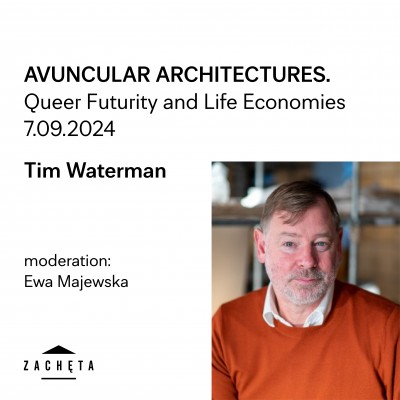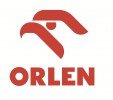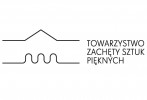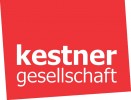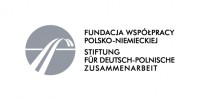Prinz Gholam
07.09 – 03.11.2024 Prinz Gholam
Zachęta – National Gallery of Art
curator: Maria Brewińska
cooperation: Jess Łukawska
exhibition production: Karolina Jezierska-Pomorska, Dominika Kaszewska
installation: Andrzej Bialik, Dariusz Bochenek, Remigiusz Olszewski, Grzegorz Ostromecki
conservator: Michalina Sobierajska
inventory: Monika Zaleszczuk
exhibition communication: Zofia Koźniewska, Milena Liebe, Alicja Malicka, Aleksandra Sienkiewicz, Alicja Sznajder, Justyna Wydra
publishing department: Piotr Antonów, Małgorzata Jurkiewicz, Dorota Karaszewska, Krzysztof Łukawski, Jolanta Pieńkos
accessibility: Pamela Bożek, Paulina Celińska, Emilia Rudzka
programme accompanying the exhibition: Daria Kubilisz, Zbigniew Szymańczyk, Monika Weychert, Adam Wilk, Jędrzej Zakrzewski
visual identification: Mateusz Machalski
7.09, Saturday
16:00 – 20:00 p.m
Prinz Gholam. Performance with four entrances
8.09, Sunday
12:15 p.m.
Guided tour of the exhibition by Prinz Gholam
Prinz Gholam is the collaborative name of two artists, Wolfgang Prinz and Michel Gholam, who have been working together since 2001. Hailing from different cultural backgrounds — German (Prinz) and Lebanese (Gholam) — their art transcends national contexts. They draw inspiration from diverse cultures and eras, incorporating these elements freely into their work. Their creative practice encompasses performance pieces and choreographies staged in the presence of viewers or for the photographic or film camera, as well as large-scale drawings, stone sculptural objects, and distinctive masks, the latter influenced by the 2020 pandemic.
The Zachęta exhibition presents the duo’s diverse body of work, demonstrating their unconventional approach to traditional artistic media. It highlights their symbiotic working relationship, emphasising the significance of performance and performative practices. Prinz Gholam’s work embodies and reinterprets a wealth of cultural references, spanning ancient and classical art, contemporary creations, literature, media, historic sites, museums, architecture, and the natural world. Prinz Gholam’s unique performative journey started in 2001 within the confines of a private apartment. It began with practising and synchronising static choreographies, blending planned elements with intuitive and spontaneous movements. Photography became integral to their multidisciplinary approach, initially capturing sequences of compositions with bodies arranged to test their limits, in stillness. The connection between these two ‘selves’ gave rise to a third, ‘unites’ self, a living sculpture visible only through photography. The exhibition showcases early photographic works from 2002–2006, documenting that unhurrying creative process. Here, photography and later film serve as a third eye that intrudes, but also documents, unites, and reveals the recent past, unseen by the participating bodies. Months of experimentation, self-acceptance, and affirmation led the duo to extend their work to the public space.
The artists transitioned from working in intimate settings to engaging with their surroundings, a shift that made choreographing bodies more complex, but also unveiled new meanings and perspectives. Their early exhibition at Galerie Jocelyn Wolff in 2004 saw Prinz Gholam appropriating poses and gestures from existing art, notably Pierre Klossowski’s coloured pencil drawings, such as those used in their performance-for-camera Diane et Callixte (Diana and Callisto), based on choreographies and poses known from his work. Prinz Gholam’s distinctive choreography (present also in their drawings) emerged from these compositions: static torsos, geometric bodies, and, crucially, an uncanny quality in the poses and intertwined bodies, whether touching, squatting, or twisted in relation to one another. One of Prinz Gholam’s earliest public performances, Ein Ding mehr (One More Thing), was staged in 2006 at the exhibition La Monnaie vivante (CAC Brétigny/Studio Micadanses Paris), its title drawn from Klossowski’s writing. This project showcased works focused on choreography and contemporary practices involving the bodies of both artist and spectator. Prinz Gholam’s performance explored the interplay of bodies approaching and confronting each other. As is characteristic of their work, the subjects were unified but devoid of individuality; the artists appeared ordinary and neutral, allowing the choreography to take centre stage.
Prinz Gholam’s performances feature formal, static poses found in classical painting and sculpture, drawing on a variety of sources. However, unlike their historical inspirations, their practices embody a tangible presence, sometimes engulfed by the aura of nature or architecture. This is particularly apparent in their filmed performances. The series created during documenta 14 in Athens (2017) — My Sweet Country (at the Temple of Olympian Zeus) and Speaking of Pictures (at the Panathenaic Stadium) — feature choreographed sequences set against the backdrop of historically-charged ancient ruins, with a natural acoustic environment. However, they also draw inspiration from other sources, including Eugène Delacroix’s paintings, Michel Butor’s writing, Wilhelm Plüschow’s photographs, and the broader Arcadian traditions. Similar to their drawings, the references in their performances are diverse and not always readily apparent, including both conscious and subconscious influences absorbed throughout their artistic education. The combination of choreographed sequences against ancient ruins, precise movements, and minimalist gestures create a unique narrative, experienced differently in live performance versus film. Speaking of Pictures, with its unique fixed camera perspective, reveals the seemingly mundane actions of the artists while highlighting elements of both antiquity and modernity. It portrays contemporary life within the context of an ancient relic, transforming it from a mere cultural heritage site into a part of a living, albeit nonverbal, language.
The artists take on a less neutral presence in the performance recorded without an audience in Rome’s Palazzo Altemps at the pandemic’s onset in 2020. The resulting film My Heart Is a Poised Cithara sees them within this 16th-century palace, amidst Renaissance, Roman, and Greek sculptures, as they engage in a dialogue with the collection, including figures like Hercules and Aesculapius. This interaction addresses the enduring classical ideals of beauty, perfection, and masculinity. The palace’s sculptures and architecture, filled with representations copied for centuries as symbols of power and beauty, have become phantasms upholding historical continuity and socio-cultural norms of uniform societies. Through slow, deliberate movements, Prinz Gholam interact with these objects, questioning and negotiating iconographic patterns and Western canons. Thus, they expose our fascination with dominant cultural norms.
Concurrently, the artists began incorporating simple, handmade masks (oval-shaped paper with a drawn face and elastic band). These masks took on new significance in the context of the pandemic, which the face mask came to symbolise as a protective tool. In myths, it sometimes happens that the mask becomes one with the face — it doesn’t so much replace it as it becomes the face itself. Prinz Gholam’s masks offer a commentary on identity and criticise the societal standardisation imposed by prevailing norms. Drawn with crayons on paper, they function both as standalone artworks and as performance props. Diverse in expression, ranging from realistic to grotesque, historical to abstract, they are products of improvisation. Importantly, they conceal identity, representing a ‘non-identity’ that emphasises the presence of performative bodies. The masks’ anonymity aligns with the neutral choreographies, enhancing the theatricality of the performances while erasing the artists’ individual selves and neutralising their actions. Collections of pebbles from various continents, used by the artists to create portraits or schematic faces with a touch of playful seriousness, further echo the theme of masks. When displayed en masse on the wall, these pebble portraits become a faceless crowd with vacant eyes, representing yet another group of anonymous protagonists.
Figures peering through masks populate Prinz Gholam’s large-format drawings, born from a continuous process of observation, collection, and creation of visual materials and performative pieces. Drawing is a vital aspect of their practice, with coloured pencil works expressing spontaneous imagination. These drawings embody various bodily performativities, starting from those of the artists themselves, evoking specific events, figures, and objects, blending different times and spaces. At the Zachęta exhibition, the drawings are accompanied by the artists’ poetic commentaries, offering insights into the depicted stories. These represent a collection of diverse relationships with the world, associations, and visual resources gathered through a lengthy process of looking and learning. Prinz Gholam’s symbiotic collaboration results in homogenous works, as if created by one person, expressing both personal experiences and a socially-constructed cultural imagination.
Maria Brewińska
PRINZ GHOLAM
Wolfgang Prinz, born 1969 in Leutkirch (Germany) and Michel Gholam, born 1963 in Beirut, work together since 2001. They live in Berlin.
Selected individual exhibitions and performance projects:
Scenes from Behind, Galerie Jocelyn Wolff, Paris/Romainville (2023); Musée dʻart contemporain de la Haute-Vienne, Rochechouart, France (2022); The Survivor and the Dreamer, SDK — Dresden State Museum, Germany (performance, 2022); While Being Other, Mattatoio, Rome (2021); My Heart Is a Poised Cithara, Hidden Histories, Museo Nationale Romano, Palazzo Altemps, Rome (performance, 2020); Dial F for Father, MEWO Kunsthalle Memmingen, Germany (2020); Dial F for Father, Art in Public Space Tyrol, Austria (performance, 2019); Speaking of Pictures, Galerie Jocelyn Wolff, Paris (2018); Centre Pompidou Metz, France (performance, 2010).
Selected group exhibitions:
Never Cross the Same River Twice, Troy House Art Foundation, London (2023); The New Man — The Announcer — The Constructor, Kestner-Gesellschaft, Hannover (2023); Aranya Plein Air Art Project, Aranya Art Center, Jinshanling, China (2023); Aichi Triennale, Nagoya, Japan (2022); Villa Massimo in Cittá, Rome (2021); Syncopation: Contemporary Encounters with the Modern Masters, Pola Museum of Art, Sengokuhara/Hakone, Japan (2019); The Video is the Message, Hamburger Kunsthalle (2018); documenta 14, Athens and Kassel (2017); Generosity — The Art of Giving, National Gallery Prague (2016); Soleil Politique, Museion Bozen/Bolzano (2014); Blue Times, Kunsthalle Wien, Vienna (2014); Le Movement Performing the City, Swiss Sculpture Exhibition, Biel/Bienne (2014); The Living Currency/Die Lebende Münze, 6th Berlin Biennale for Contemporary Art, Hebbel am Ufer, Berlin (2010); The Living Currency, Tate Modern, London (2008).
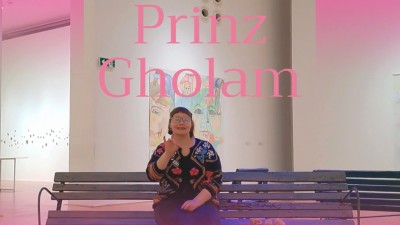
Prinz Gholam
07.09 – 03.11.2024
Zachęta – National Gallery of Art
pl. Małachowskiego 3, 00-916 Warsaw
See on the map
Godziny otwarcia:
Tuesday – Sunday 12–8 p.m.
Thursday – free entry
ticket office is open until 7.30 p.m.
